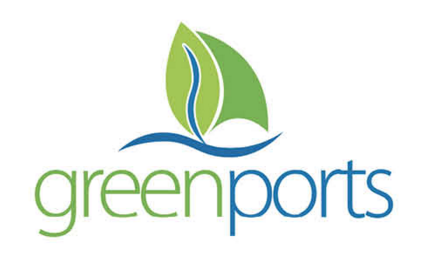GREEN PORTS
Categories: Concluded | Polluting emissions | Anthropogenic impacts | Montelibretti | National | Technology transfer

Funding: POR CALABRIA FESR 2007/2013 - AXIS I Public Notice Strategic Agenda Innovation Poles
Period: May 2014 - December 2015
Total project budget: ---
Total budget CNR IIA: ---
Scientific Responsible: Lucia Paciucci
Abstract of the project
In the international arena, interest in “Green Ports” is now on the rise. Many Port Authorities, on the recommendation of the European Commission and the European Sea Port Organization, have taken steps to become "Green Ports", adopting for this purpose a policy of reducing greenhouse gas emissions, better energy use and efficient supply from renewable sources in order to create port facilities with zero emissions and zero energy costs.
The Project focuses on the development trajectory concerning the production and management of energy from renewable sources. The activities are framed in a specific area, the port one, which is of considerable interest both for the regional territory and for Europe. The main objective is to define a pilot context within the Calabria Region, identifying two case studies: the Port of Crotone, seat of the Innovation, Energy and Environment pole, and the port of Vibo Valentia. The aim is to establish for both a model for the integrated management of energy from renewable sources and for energy efficiency in the port area, also evaluating the impacts that port areas have on the environment. Specifically, the activity concerns the possibility of exploiting the motion of the sea waves, integrating it with other forms of energy. We want to propose an innovative technology for the production of electricity from clean and renewable sources, making an estimate of the environmental parameters of a meteorological-climatic character identified in the port area, in order to be able to establish the energy potential in terms of waves, wind and sun. Thanks to the contribution of the companies involved in the project, moreover, it is possible to provide integrated systems for monitoring, management and control of the electricity distribution network, also offering specific applications for the medium and low voltage network, as well as ad hoc solutions for analysis and prediction for the energy efficiency of the case study. With regard to the assessment of the impacts that port areas have on the environment, the project provides for the experimental detection of the main pollutants in the area selected for the pilot study, as well as the geomorphological and climatic characteristics, and if sufficient data are available, the inventory of emissions referred to the port under investigation.
The aim of the project is to define a process for the environmental and energy management of ports and their classification as "Green Ports", introducing new technologies for the production of energy from renewable sources in the port area and new processes for the integration of problems. of an environmental and energy nature. The aim of the project is to achieve energy self-sufficiency with renewable sources, as well as to improve environmental sustainability. The integrated management of energy from renewable sources, for the improvement of energy efficiency in the port area, sees as an element of absolute importance the possibility of exploiting the energy produced by sea waves. With this project, we intend to configure and fine-tune a marine modeling system for the off-shore simulation of the wave spectrum, analyze the wave motion using a high-resolution marine model (WAM) and thus develop a forecasting system for potential future use on the selected areas. The project provides a complete picture of both the energy potential of the various solutions to be integrated, and an analysis of the costs for the construction of the “Green Port” and the impact on the environment of the port area. The task of the CNR IIA is to verify the state of the air quality in the selected target port area (Port of Crotone) and identify the criticalities, develop innovative low cost and high reliability systems for real time or near real time evaluation of levels of air pollution in the port environment, develop methods for assessing the impact on ecosystems and human health. For this purpose, a sampling grid has been developed that covers the entire port area plus some external points useful for characterizing the environment as a whole. To the passive samplers, installed in each point, 3 PM10 samplers were added (one inside the Port area and two outside at the ARPACal control units) for the evaluation of the semi-volatile organic component (IPA, etc.).
Wavenergy.it srl - COORDINATOR
CRATI scrl
LABOR SRL
COOPERATIVE TEC
BUONAFEDE SRL
University of Mediterranean Studies of Reggio Calabria
CNR-IIA
CNR-ISAC
CRATI scrl
LABOR SRL
COOPERATIVE TEC
BUONAFEDE SRL
University of Mediterranean Studies of Reggio Calabria
CNR-IIA
CNR-ISAC
Angel Cecinato
Catia Balducci
Paula Romagnoli
Matthias Perilli
Massimiliano Frattoni
Francesca Vichi
Andrea Imperiali
Sergio Cinnirella
Antonella Macagnano
Andrea Bearzotti
Francesco Petracchini
Marco Secret


